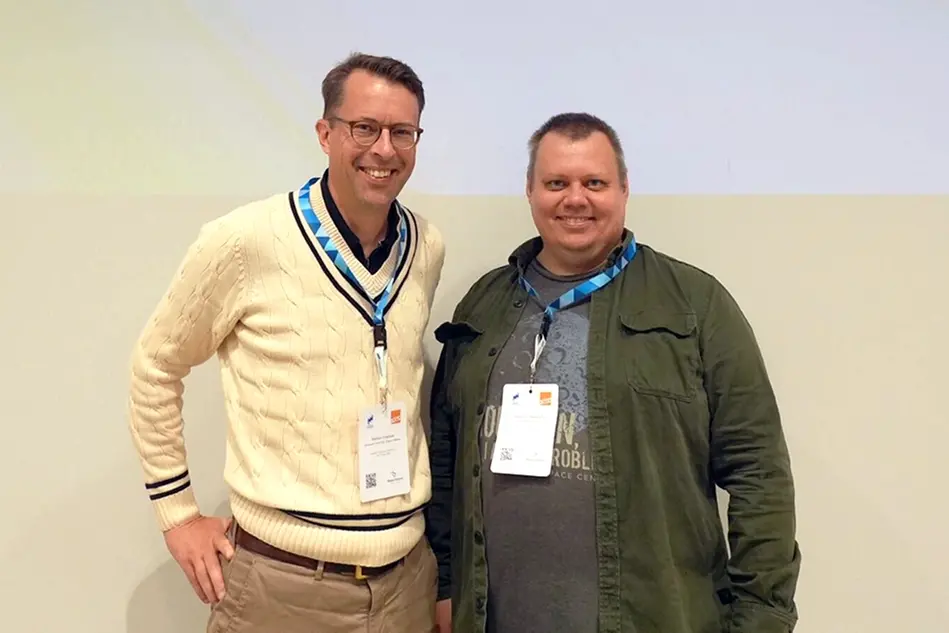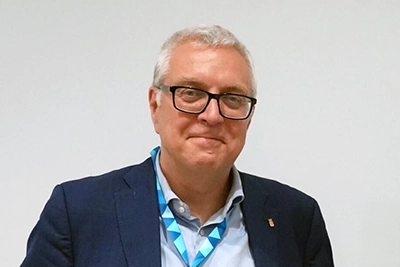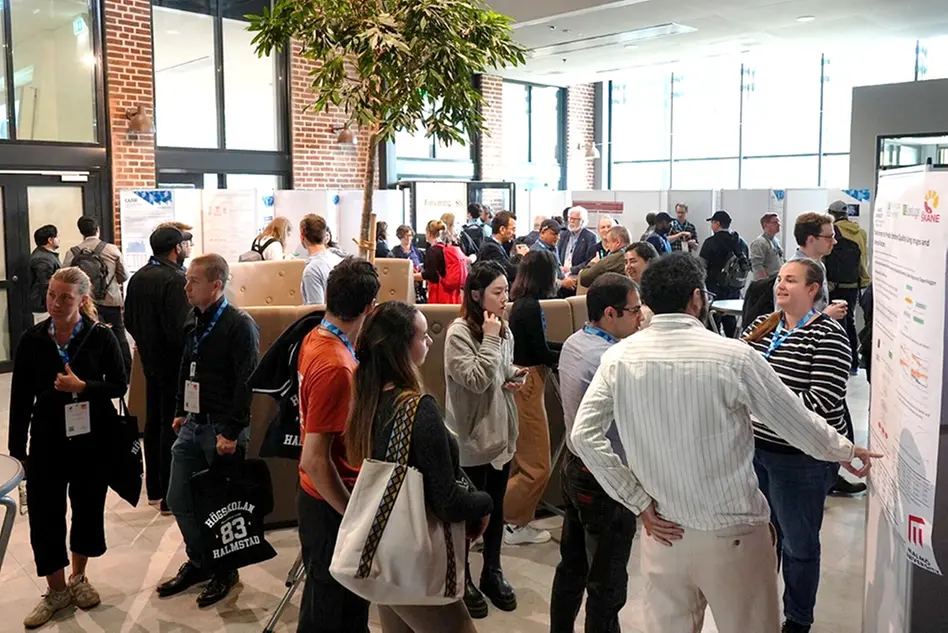SAIS 2025 brought Sweden’s AI community to Halmstad
In June, researchers and practitioners from across Sweden gathered at Halmstad University for the annual conference of the Swedish AI Society (SAIS). Hosted by the Center for Applied Intelligent Systems Research (CAISR) at the School of Information Technology, the event featured keynote speakers, poster sessions and discussions on the future directions of artificial intelligence research.
As the leading national forum for artificial intelligence research, SAIS brings together scholars, practitioners and students from across disciplines and sectors. Each year, the conference rotates between Swedish universities, offering a snapshot of current trends and future directions in AI. This year’s SAIS conference marked a special milestone as it was the first time in ten years that the Swedish AI Society met in Halmstad.
“Hosting SAIS 2025 shows that Halmstad University and CAISR play an important role in Sweden’s AI field. It also gives us a great opportunity to keep building and growing our research in the years ahead”, says Slawomir Nowaczyk, Professor of Machine Learning at Halmstad University, General Chair for the SAIS 2025 conference and board member of the Swedish AI Society.

Markus Lingman, Chief Strategy Officer at the Halland Hospital Group and one of the keynote speakers, and Slawomir Nowaczyk, Professor at Halmstad University och General Chair for SAIS 2025.
Recent developments in AI

Kalle Åström, Professor.
The conference, which brought together more than 75 attendees, opened with a presentation by Kalle Åström, Professor in Mathematics and Computer Vision at Lund University. His talk focused on recent progress in feature-metric learning for vision and audio, highlighting the work of the AI Lund network and ongoing developments in geometric estimation techniques, which is used to determine unknown parameters of objects or spaces based on available observations.
Participants also heard from Markus Lingman, Chief Strategy Officer at the Halland Hospital Group and Adjunct Professor at Halmstad University. In his presentation, he addressed the gap between AI’s potential and its actual large-scale impact in healthcare. He provided insight into the local AI infrastructure in Halland and presented international collaborations aimed at early detection of medical conditions using advanced data analytics.

Benyou Wang, Associate Senior Lecturer.
The final keynote was delivered by Benyou Wang, Associate Senior Lecturer at The Chinese University of Hong Kong. His presentation explored recent developments in medical large language models and examined how synthetic data generation and patient simulation could shape the future of AI-driven healthcare.
Stimulate research and strengthen partnerships
The conference also featured multiple sessions where a range of AI topics were covered, from technical innovations to applied research, which allowed for networking and discussions on the future of AI both nationally and internationally.
According to Slawomir Nowaczyk, the emphasis on discussions and interactive talks underscored the importance of collective knowledge construction.
“The programme really showed what SAIS is all about and highlighted Halmstad University’s role. Our aim is to encourage solid scientific discussions across different fields, stimulate early-stage research, and strengthen partnerships between universities, industry and the public sector”, says Slawomir Nowaczyk.

Several different types of sessions were held during the conference, including a poster session.
Best AI Master’s thesis awarded
During the conference, the SAIS Best AI Master’s Thesis Award 2025 was presented, recognising outstanding postgraduate-level education and research in artificial intelligence. This year, five high-quality theses were nominated from across the country, after which a rigorous evaluation process by the SAIS board followed.
The award went to Hannes Nilsson and Rikard Johansson from Chalmers University of Technology for their thesis “Learning to Navigate Over Stochastic Transport Networks Using Multi-Armed Bandits,” supervised by Deputy Professor Morteza Haghir Chehreghani at Chalmers.
Hannes Nilsson and Rikard Johansson’s work was deemed both scientifically strong and well-suited for presentation at the conference. It tackled the challenge of finding energy-efficient routes for electric vehicles, combining a real-world use case with careful analysis and testing. The thesis was praised for its clear motivation, scientific contribution and thorough experimental validation.
Focus on trustworthy and responsible AI
After the SAIS conference, the week continued with the Socially Responsible and Trustworthy AI Day, a one-day event that brought together experts from academia, industry and the legal sector to explore critical questions surrounding responsible AI development. Keynote speakers included Rafia Inam from Ericsson and Kristina Knaving from RISE.
A central theme was the EU AI Act and its expected impact on innovation and governance. The panel discussion, “Impact of AI regulation on industry and society,” addressed legal and practical perspectives on AI deployment in both high- and limited-risk contexts. The day also included poster presentations and breakout sessions, providing room for dialogue across disciplines.
“By holding the Socially Responsible and Trustworthy AI Day right after the SAIS conference, we could move smoothly from technical topics to the societal and regulatory side of AI. I think this setup reflected how well Sweden’s AI ecosystem is prepared for responsible innovation”, concludes Slawomir Nowaczyk.
Text: Emma Swahn
Photo: Marlena Nowaczyk


